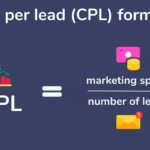In today’s fast-paced digital landscape, financial services companies face an ongoing challenge—how to effectively reach their target audience while maintaining accuracy, compliance, and personalization. While online marketing strategies dominate discussions, traditional methods such as direct mail are experiencing a resurgence. Coupled with cutting-edge technologies like an international address verification API, direct mail campaigns can now achieve unprecedented levels of precision and efficiency.
This blog explores how direct mail financial services campaigns can leverage advanced address verification systems to optimize customer outreach and improve ROI.
Why Direct Mail Still Matters in Financial Services
With the rise of digital marketing, many businesses assume that direct mail is obsolete. However, research shows that direct mail continues to generate higher engagement rates than email marketing. According to the Data & Marketing Association (DMA), response rates for direct mail are significantly higher—reaching up to 9% compared to less than 1% for email.
For financial services, where trust and credibility are paramount, direct mail serves as a tangible, personal, and impactful way to communicate with customers. Here’s why financial institutions still rely on direct mail:
- Higher Engagement: Direct mail often gets more attention than digital ads, as recipients are more likely to read physical materials than skim through emails.
- Personalization Opportunities: Financial firms can use variable data printing to customize mailers with customer names, specific financial offers, or investment opportunities.
- Regulatory Compliance: Many financial institutions prefer direct mail for regulatory communications since physical documents are often required by compliance laws.
- Brand Authority: A well-designed, professional mailer reinforces a company’s credibility and strengthens brand trust.
Read Also: Unlocking the Potential of Coyyn.com: A New Era in Digital Business
The Role of International Address Verification API in Direct Mail Campaigns
One of the biggest challenges with direct mail campaigns, especially for international audiences, is ensuring that mail reaches the right recipient. Address errors can lead to undelivered mail, wasted marketing budgets, and compliance issues. This is where an international address verification API becomes essential.
Benefits of Using an Address Verification API
- Accuracy & Deliverability: Address verification APIs validate and correct addresses in real time, ensuring that customer details are correct before mail is sent out.
- Cost Efficiency: Eliminating incorrect addresses reduces returned mail costs and improves overall campaign efficiency.
- Compliance & Security: In industries like banking and insurance, customer verification is crucial for compliance. Address verification APIs help financial firms maintain KYC (Know Your Customer) and AML (Anti-Money Laundering) compliance.
- International Reach: Financial institutions often have customers worldwide. An international API helps standardize addresses across different countries, ensuring seamless communication with global clients.
How to Optimize Your Financial Services Direct Mail Campaign
Integrating direct mail with address verification and digital tracking can significantly boost your campaign’s effectiveness. Here are some strategies to maximize your ROI:
1. Segment Your Audience for Targeted Messaging
Understanding your customer base is key to crafting relevant messages. Segmenting audiences based on demographics, behavior, or financial needs allows for more personalized direct mail campaigns.
2. Use Address Verification Before Sending Mail
Before launching a campaign, verify all addresses using an international address verification API to eliminate errors. This ensures that your mail reaches the intended recipients and avoids costly returns.
3. Incorporate Personalization for Better Engagement
Personalized mail performs better than generic mailers. Leverage customer data to tailor offers, financial solutions, and investment advice based on their preferences.
4. Combine Direct Mail with Digital Tracking
Modern direct mail marketing includes QR codes, personalized URLs (PURLs), and NFC technology, allowing recipients to easily transition from physical mail to online platforms for further engagement.
5. Monitor and Measure Campaign Performance
To ensure continuous improvement, track your direct mail performance. Use response tracking, conversion rates, and customer feedback to refine future campaigns.
Real-World Use Case: Financial Services Firm Boosts ROI with Direct Mail
A global financial institution recently launched a direct mail campaign targeting high-net-worth individuals (HNWIs). By using an international address verification API, they ensured that every mailer reached the right client, reducing undelivered mail by 30%.
They personalized each mailer based on the customer’s investment history and included QR codes linking to exclusive financial webinars. As a result, the campaign achieved a 12% conversion rate—double the industry average.
Conclusion
The combination of direct mail financial services and advanced address verification technology creates a powerful marketing strategy for financial institutions. Direct mail remains a trusted channel, offering high engagement and brand credibility, while address verification ensures precision, compliance, and cost efficiency.
By integrating these elements, financial services firms can enhance customer outreach, build trust, and drive conversions in a competitive market. Whether targeting local clients or expanding globally, leveraging an international address verification API ensures that every piece of mail reaches its intended recipient, making campaigns more effective and profitable.



